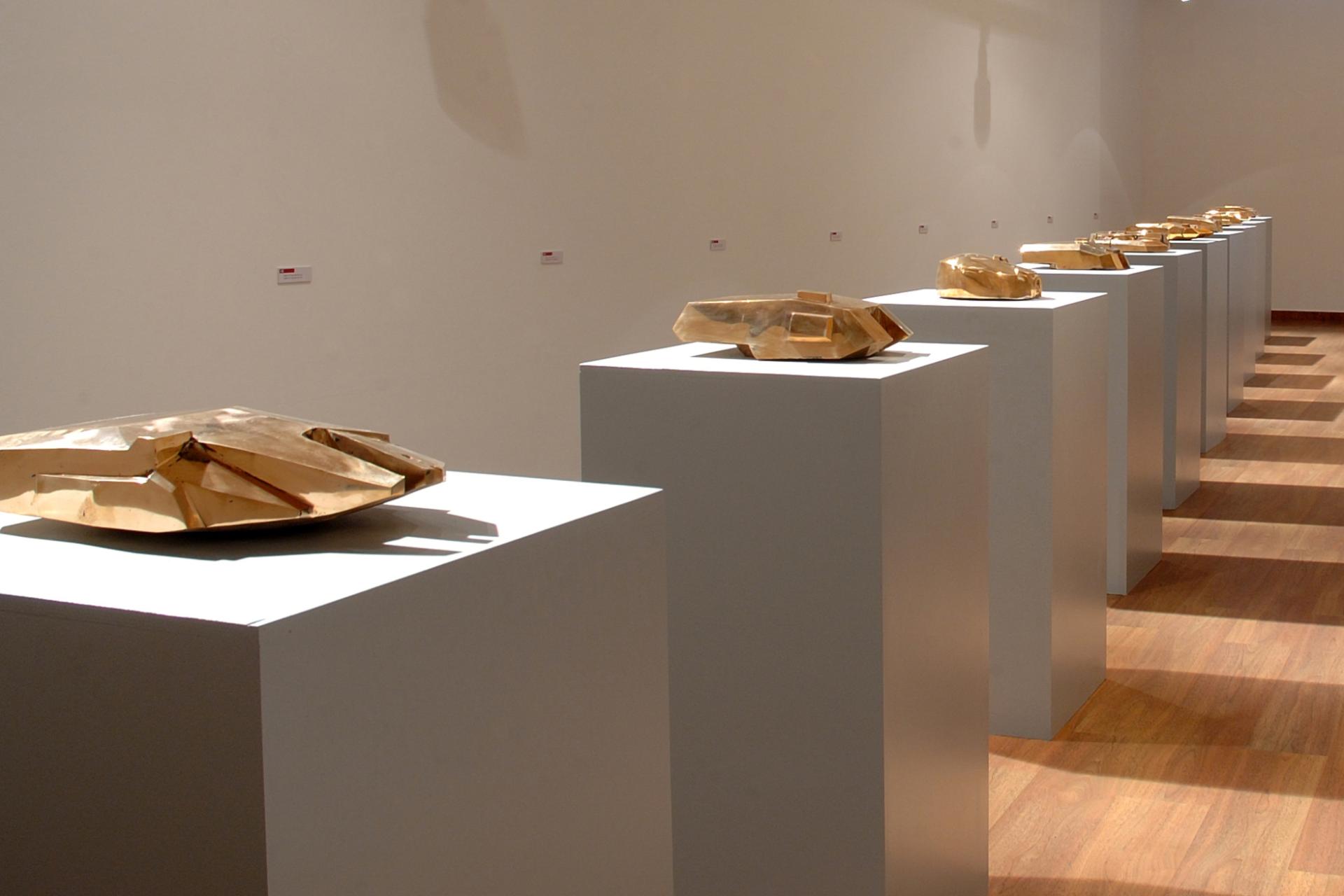
Anatoly Osmolovsky — one of the most active members of Russian art-stage, contemporary art expert and theorist. His activity took shape at “wild”, post-perestroika period of contemporary art history within the framework of the 1990th “Moscow actionism”. However, when art institutions and market emerged and provided grounds for art to function normally, Osmolovsky diverged from his former radical media provocations by employing “nonspectacular” strategy within a new context, and turned to direct creation/production of objects.
Anatoly Osmolovsky’s new project “Hardware” (2006) represents a series of 11 bronze sculptures. Their basis is present-day tank turrets of the countries they are produced in (Brazil, Great Britain, Germany, Israel, Italy, Russia, the USA, France, the Republic of South Africa, Japan). The prototype of the eleventh sculpture is the tank turret of a new Russian clandestine tank “Black Eagle”. In the present project the artist is mostly preoccupied with, “how avant-garde geometric form finds its pragmatic application. The reason is that inventors and manufacturers of tanks are never interested in their aesthetic look, the most important aspect for them is the form’s shell-resistance”. According to Osmolovsky the tank turrets’ configuration refers to art experiments of early avant-garde, and therefore his goal is to unveil this aesthetics to the audience.
The artist’s sculpture objects balance between abstraction and reality, uniqueness and multitude. While the art object still resembles a product of military industry, it nevertheless assumes a new essence by interlinking abstract form, a play on scale and material, and thereby it restores a symbolic distance, which separates the object and the audience. The author pays special attention to the corporeity of his objects. The mirror surface of his “hardware”, perfectly polished, becomes a metaphor of madeness, perfection of artwork, restoring their aura of authenticity and uniqueness. The mirror surface provokes an absolutely gliding look, and reflects merely the very expositional space of the gallery and its audience and as a result calls forth the effect of impenetrability/inexplicability of genuine art. Meanwhile a deliberately glossy look of the “hardware” places these artworks on the borderline between avant-garde and kitsch.
Thereby, Osmolovsky’s turn for avant-garde aesthetics presupposes not only the imitation of authentic plastic language, but at the same time, it sets background for a present-day perception of avant-garde object. Culture memory is used to rehabilitate artwork in a “period of its technical reproduction”, but conceptual monotony, seriation of a shape discredits the uniqueness of artifact. Nevertheless each piece of “hardware” (unlike his previous series — “Nails”, “Bugs”, “Tickets to heaven”, which consisted of anonymous objects) has its own name, as though emphasizing the certainty of identification. By means of asking questions, rather than answering them, Osmolovsky creates images, which halt between opposite meanings, on the very edge of their dispersion and condensation.
Vladimir Levashov